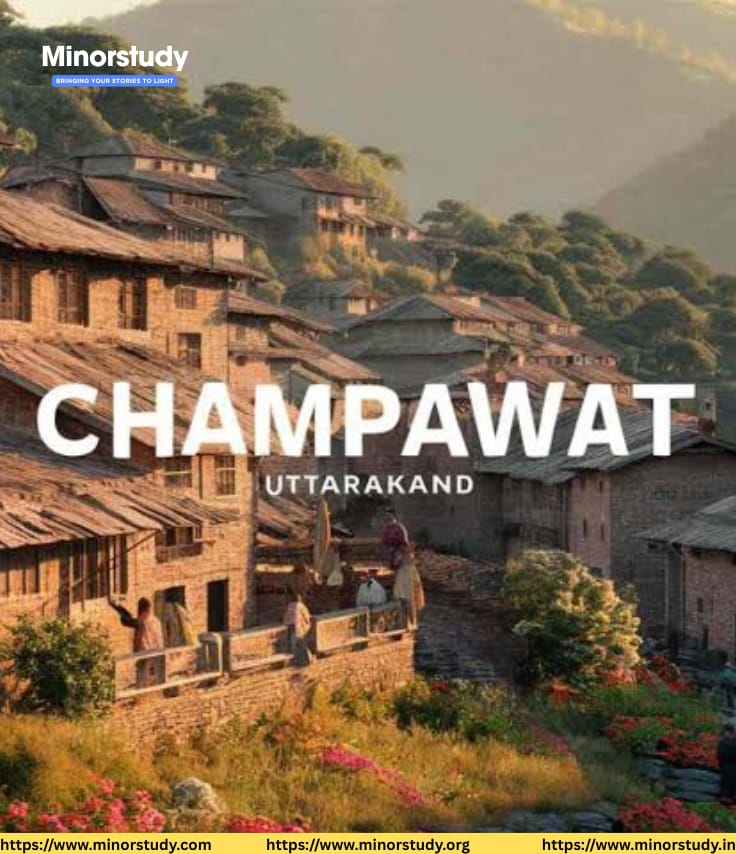🌟 Introduction: Where the Past Meets the Peaks
Nestled in the picturesque Kumaon region of Uttarakhand, Champawat is a place where mythology, history, spirituality, and wildlife converge. Despite being lesser known to the outside world, this small town boasts an enormous cultural and historical legacy — from Chand dynasty rule to stories of the Champawat Tiger, and from ancient temples to spiritual tranquility.
- 📜 History of Champawat
- 🏰 Timeline of Major Events in Champawat
- 🔥 9 Powerful Facts About Champawat
- 🙋♀️ FAQs About Champawat
- ❓ Q1: Why is Champawat historically important?
- ❓ Q2: What is the connection between Jim Corbett and Champawat?
- ❓ Q3: Is Champawat a religious site?
- ❓ Q4: Best time to visit Champawat?
- 🎉 Observances and Local Celebrations
- 💌 Wishing Message
- 📌 Important Points You Shouldn’t Miss
- 🌱 Daily Life Impact of Champawat’s Heritage
- 🛕 Societal Significance of Champawat
- 🏛️ 1. Cultural Heritage
- 📖 2. Literary Inspiration
- 🛤️ 3. Strategic Gateway
- 🧘 4. Modern Spiritual Retreats
- 🧾 Conclusion: A Quiet Town with a Roaring Legacy
Whether you’re a history lover, spiritual seeker, adventurer, or nature enthusiast, Champawat has something to offer — a quiet strength wrapped in Himalayan serenity.
📜 History of Champawat
The story of Champawat stretches back to ancient times. It served as the capital of the Chand Dynasty during the medieval period, from the 10th to 18th century. The Chand rulers were great patrons of temple architecture, culture, and Sanskrit learning, leaving behind a spiritual and architectural legacy.
Champawat is also steeped in mythology. According to legends, Lord Vishnu took the form of Kurma (turtle) in this region. It’s even mentioned in the Skanda Purana, and revered as a significant spiritual ground.
🏰 Timeline of Major Events in Champawat
| Year/Period | Event |
|---|---|
| 10th Century CE | Champawat becomes capital of the Chand Dynasty |
| 12th–17th Century | Flourishing of temples like Baleshwar, Kranteshwar |
| 1907 | Champawat Tiger killed by Jim Corbett after 436 human deaths |
| 2000 | Becomes part of newly formed state of Uttarakhand |
| Present Day | Growing tourism, heritage awareness, spiritual retreats |
🔥 9 Powerful Facts About Champawat
🕍 Baleshwar Temple is a stunning example of Nagara-style Hindu architecture, built by the Chand kings in the 12th century.
🐅 The Champawat Tiger was a man-eating tigress responsible for 436 human deaths, finally stopped by legendary hunter Jim Corbett.
🌄 Kranteshwar Mahadev Temple sits atop a hill with panoramic Himalayan views, a beloved spiritual and trekking site.
🧘 Champawat is mentioned in Skanda Purana, making it a highly sacred place in Hinduism.
📜 The region preserves rare copper plate inscriptions from the Chand period — a historian’s treasure!
🧒 Jim Corbett’s early life was spent in this region, shaping his deep understanding of wildlife.
🌿 Lohaghat, just 14 km from Champawat, is known for its peaceful pine forests and British-era architecture.
🧭 Ek Hathiya Ka Naula (single-handedly built water tank) is an engineering marvel and mystery from the past.
🛤️ Champawat lies on a quiet but strategic route to Pithoragarh, making it a base for Himalayan explorations.
🙋♀️ FAQs About Champawat
❓ Q1: Why is Champawat historically important?
Champawat was the capital of the Chand dynasty, which ruled Kumaon for centuries. It became a center of temple building, learning, and culture, with deep mythological associations.
❓ Q2: What is the connection between Jim Corbett and Champawat?
The Champawat Tiger was a man-eating tigress killed in 1907 by Jim Corbett. This event became his first major hunting expedition, immortalized in his book Man-Eaters of Kumaon.
❓ Q3: Is Champawat a religious site?
Yes. It’s home to temples like Baleshwar, Kranteshwar, Advaita Ashram, and is associated with ancient Hindu texts. It’s also a place of spiritual retreats and yoga.
❓ Q4: Best time to visit Champawat?
The best time is October to June, with pleasant weather, clear skies, and access to spiritual and historical landmarks.
🎉 Observances and Local Celebrations
| Festival | Description |
|---|---|
| Maha Shivratri | Celebrated at Kranteshwar Mahadev and other Shiva temples with devotion and processions |
| Navratri | Local temples come alive with worship, music, and community feasts |
| Regional Fairs | Local village fairs like Lohaghat Mahotsav promote folk art, dance, and handicrafts |
💌 Wishing Message
🌼 May the serenity of Champawat inspire peace in your heart, and the wisdom of its past strengthen your journey. Whether you visit as a pilgrim, traveler, or learner — may your path be as timeless as the mountains themselves. 🌿
📌 Important Points You Shouldn’t Miss
🔹 Mythology and wildlife uniquely blend in Champawat
🔹 One of the most scenic Himalayan districts, yet still off the beaten track
🔹 Holds spiritual, historical, and ecological importance
🔹 Offers trekking, meditation, temples, forests, and more
🌱 Daily Life Impact of Champawat’s Heritage
While it may seem like a remote destination, Champawat’s legacy still resonates in daily life:
🧘♀️ 1. Spiritual Peace
Residents and visitors benefit from the tranquil, temple-rich atmosphere, promoting mental peace and mindfulness.
📚 2. Educational Value
Its temples and inscriptions are used by students, researchers, and historians to study ancient India.
🧺 3. Economic Opportunities
Tourism, spiritual tourism, and eco-tourism provide livelihoods to locals — guides, artisans, hoteliers, and transport operators.
🐾 4. Wildlife Awareness
The legacy of Jim Corbett’s conservationism continues to shape wildlife awareness and eco-balance in this region.
🛕 Societal Significance of Champawat
🏛️ 1. Cultural Heritage
Champawat preserves Himalayan Hindu traditions, rituals, and language that are fading in urban India.
📖 2. Literary Inspiration
Authors like Jim Corbett and contemporary nature writers have drawn inspiration from Champawat’s forests and folklore.
🛤️ 3. Strategic Gateway
Its location makes it a gateway to Himalayan pilgrimage routes like Kailash-Mansarovar Yatra.
🧘 4. Modern Spiritual Retreats
With its peaceful environment and low pollution, Champawat is being rediscovered for yoga, Ayurveda, and meditation.
🧾 Conclusion: A Quiet Town with a Roaring Legacy
Champawat may not flash across your news feed like big cities do, but its impact is deeper — more spiritual than commercial, more timeless than temporary. It teaches us that power doesn’t always come from loudness. Sometimes, true power lies in silence, culture, nature, and wisdom.
Whether you go to find peace under the ancient Bodhi trees, explore hidden waterfalls, or understand how a small town became home to legends and kings — Champawat will leave a mark on your heart.








